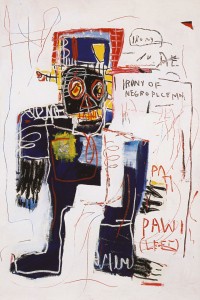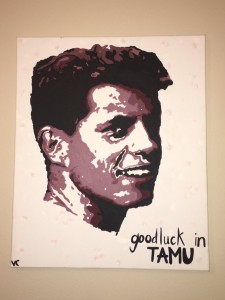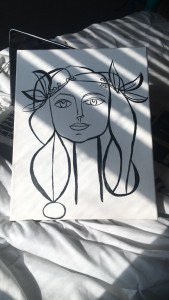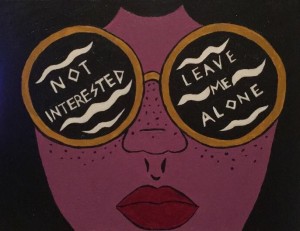I enjoyed Dr. Kennedy’s talk on Monday about Photography very much, especially his work. His art work surprised me because I always forget how beautiful Photography is when it is mixed with digital editing. Photography is beautiful, don’t get me wrong, but when Dr. Kennedy showed his art, I was speechless. His creativity blew my mind and actually inspired me to invest in a camera. He got inspired by little things and turned his photos almost into what we picture in our brain, instead of realistically. The colors were vivid and life-like, making the photos fun. The structure of the lines and colors come together, giving his art a theme kind of like chemicals, bonds, structures, DNA’s and such. Maybe that is how only I interpret it, but I think it is extraordinary. The main wicked problem of photography in my eyes would be that it is hard to capture something that hasn’t already been captured. Anyone can claim themselves to be a photographer and use all the available photo editing applications. Dr. Kennedy doesn’t seem too affected by this because his art is so different, but this affects everyone in general.
Author: Victoria Cantu
Blog Post #4
Assignment 2-Step B
Blog post #3- Jean-Michel Basquiat
Jean-Michel Basquait was an American contemporary artist, famous for graffiti and street art. He started exhibiting his neo-expressionist painting by the 1980’s in museums and galleries. Basquiat paintings are always unique, colorful, and kid-like. He focused on topics such as poverty, integration versus segregation, and inner versus outer experience. Because his art represents important issues, I chose “Irony of a Negro Policeman,” which was done in 1981. This painting shows the control that the white society has over African-Americans. This concept is ironic because it shows a black policeman with black skin with a white mask. All the colors that are shown are seen as trying to fight to be the dominant color in the painting. Instead of working together, these colors are against each other, trying to one up each other which causes tension. Basquiat’s work of art always has a meaning, and in this case a very important one. Segregation is a big problem, still to this day. Although his work was done mostly in the 80’s and that’s when segregation was very high, his art is considered to be contemporary because it was ahead of its time. No one can be compared to Basquiat or his work. His art interests me because of the deep meanings they portray. Here is a video that shows how Basquiat started, his talent, and his art. This video is where I collected the information about racism especially. https://www.youtube.com/watch?v=x7vwo8UN7mU.

Time Tracker
Blog Post #2
I have never had a particular way of painting so I decided to share 3 of my most recent paintings I did this summer. As you can see, I love to paint portraits, but not realistic ones. It is interesting to me to paint portraits because although it may not look exactly like the way it should, I am able to add character. I am working on paintings that represent the Impressionist time next to switch things up.

My friend got accepted to Texas A&M so I painted her-her favorite president.

Victoria Cantu, Picasso’s line drawing of Francoise Gilot, Acrylic on Canvas, 11 X 14 inches. 2016.

I got this idea off of a picture on Tumblr and decided to recreate it.
Austin CAN Presentation on Sept 12
I enjoyed listening to Mr. Alvarez, the executive director of Austin Community Advancement Network, share the highlights of the work that this group does. This Network increases awareness provides the community with alerts of problems that needs more attention. I found that the presentation provided super important information about the “Equity Analysis” section, especially the “Are we healthy?” section. This section he discussed is about diabetes, cardiovascular disease, smoking, and obesity rates between blacks, Hispanics, whites, and others from 2011-2014. The results surprised me because blacks showed the highest in every single category. Another fact I picked up, is that Hispanics are the least likely to have health insurance, which makes it even harder to stay healthy. This relates to wicked problems and the community because it might not ever be fixed and if it does, it will take time. Blacks, need to start taking better care of themselves because people in our community need to be healthier. Because Hispanics lack health insurance, it is critical that people in the community try to come up with solutions to solve this wicked problem. It is imperative that we explore local wicked problems like this one so we can better out community and make it a better place for everyone to live. Learning about these situation, I realized that it helps us learn more about ourselves and our world which provides everyone with more knowledge helping us figure out what we can do to help.
VISU-1100
Victoria Cantu
Part 1
The main point of “What Entrepreneurs can Learn from Artists,” by Tim Leberecht is what entrepreneurs can take from the creative minds of the artists and how they compare. The article states that “like artists, startup founders must cultivate creative habits to see the world afresh and create something new.” In “Are Artists Entrepreneurs?” Amit Gupta talks about the similarities between artists and Entrepreneurs. The main purpose of this article is that “lines between artists and entrepreneurs continue to blur.” Entrepreneurs are arguably “cousins” to artists because their qualities and jobs are so similar. Entrepreneurs are described to be people who organize, manage, and assume the risks of a business or enterprise. To be an artist, it can be risky starting especially because you don’t know if people will like your art and it can be hard making a place in the art world. Being an artist comes with many risks, just like entrepreneurs. Entrepreneurs go into the business risking and assuming full responsibility for success or failure. The article listed 12 characteristics that describes artists. All of the characteristics are spot-on but there is one characteristic where I can see where people debate. The characteristic says that artists are always passionate about their work. This is debatable because people can go into art and make it their career, but change their style just to please others and become more well-known. A lot of artists have changed their style and it is possible that they don’t like what they are doing but it works for them and earns them money. Not every artist is going to be passionate about their work, sadly, because it is possible they are in it just for the perks such as money and attention. I would add to the list that “Artists are doers.” Not every artists plans out what they are going to do before or spends a whole lot of time on their work. Artists are doers and go for the idea because they don’t have to think about anything. You can’t really mess up in the process of making art because there is no wrong or right way.
Part 2
1. My result from the grit test was 4.38-5.0. I feel like I have grit because it is so close to 5.0 and I doubt a lot of people get a perfect score. I feel like I don’t necessarily need to work on anything to improve my grit except the fact that I procrastinate.
2. Like listed before, I need to improve my level of grit by getting out of the habit of being a procrastinator. I also need to be more confident in what I do and who I am. Being more confident would definitely help me increase my grit because I lack self-confidence.
Hello world!
Welcome to your brand new blog at St. Edwards University Sites.
To get started, simply log in, edit or delete this post and check out all the other options available to you.
For assistance, visit our comprehensive support site, check out our Edublogs User Guide guide or stop by The Edublogs Forums to chat with other edubloggers.
You can also subscribe to our brilliant free publication, The Edublogger, which is jammed with helpful tips, ideas and more.